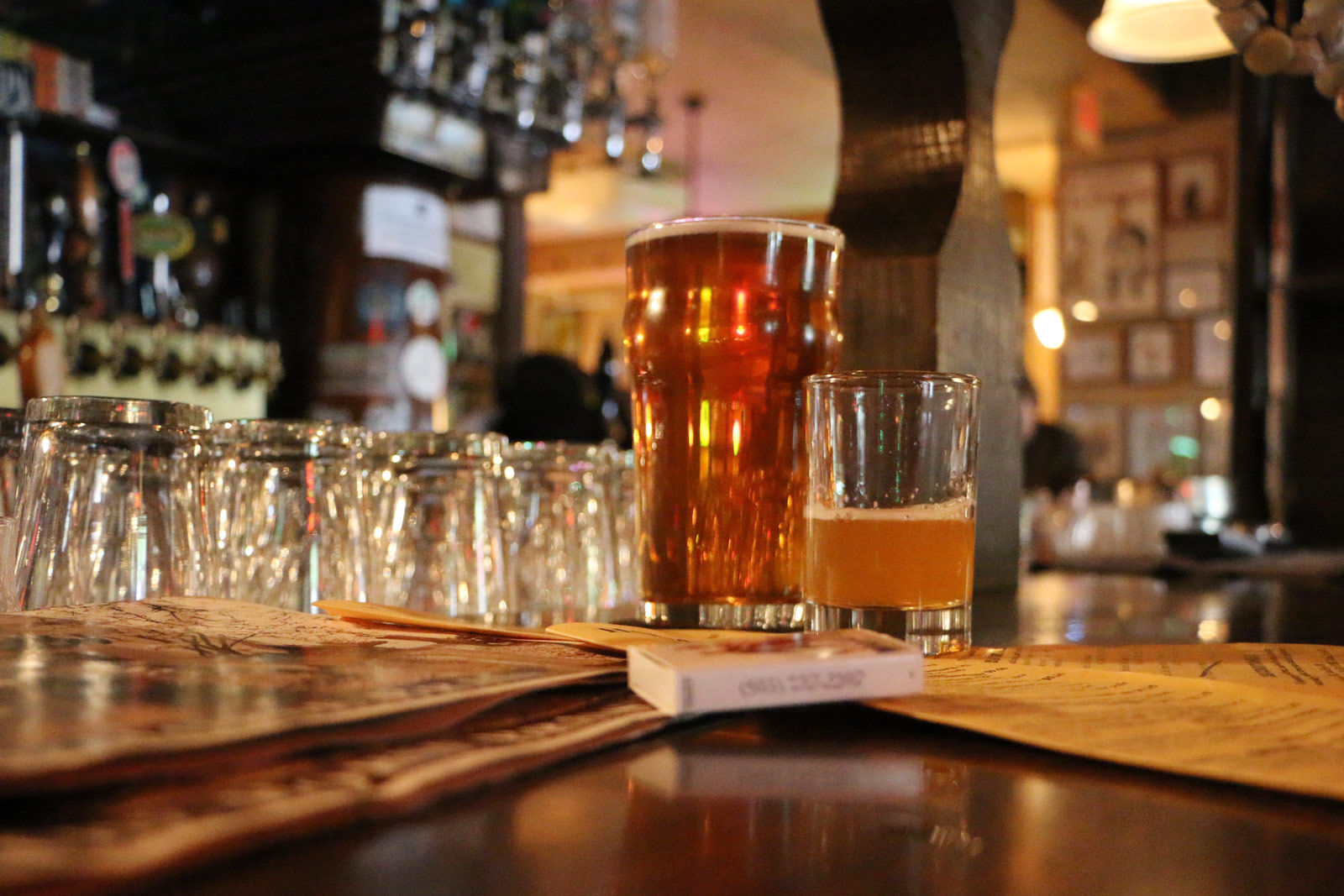This content was originally published by The Hop Review, a digital magazine that joined the Hop Culture family in March 2020.
This piece was written by a Guest Hop Reviewer.
MERIDIAN, ID
Confessions and observations from a Northwest bartender by Dayton Uttinger

Fact: When my bar top is full, I couldn’t care less what you order, provided that it doesn’t take me three precious minutes to make. I don’t have time to stereotype you based on the beer you ordered. Compared to the effort that it takes to make a mojito or a margarita, pulling a beer tap is ridiculously easy, provided the keg doesn’t blow. For every beer I pour instead of a specialty cocktail, that’s one more customer I have time to serve. So for that, thank you.
But if my bar is half-empty, then I have all the time in the world to ‘judge’ you. I know it’s not always accurate, but if enough of the same people order the same beer, you start to generalize. Light lagers are for the young–or the cheap–either way, you’re drinking it like water and leaving me a dollar at the end. Wheat beers with three slices of fruit are my go-to for women who don’t ‘like’ beer. IPAs are for man buns and graying beards alike. Surprisingly, that last stereotype is the most fluid. IPAs are the most popular style in the Northwest, where my bar is located, but its dominance has definitely decreased. I used to get asked daily about IBUs. Now, the number one question my guests ask me is, “What local beers do you have on tap?”
This is a trend across the country. IPAs are out, local craft beers are in. No, this isn’t a revelation. But you’ve got to understand that the Northwest is often the last to know these trends. So, recently, my guests have begun to drill me about where every brewery, for every beer we have, is located. This is no less annoying than memorizing IBUs, and it’s my job to know–just like it’s a doctor’s job to know your cholesterol. If anything, it does make me examine the trend. At least with IPAs, I understood why they were asking. They wanted to know the beer’s flavor profile, how bitter it would be, etc. With brewery locations, I was initially skeptical.
Look, I get it, you want fresh beer. You’ve been told local is better–and obviously local beer is fresher, right? But it’s only to a certain point. When I tell people that we have a local IPA, porter, or amber, and they’re looking for a pilsner–ya know what they end up ordering? It’s not anything local. Ultimately, people will choose flavor over proximity. Every time.
“I know that they’re trying to experience something. They’re trying to identify with something. Mostly, I know they’re searching for an authenticity…”
On the other hand, I have to sort of respect the pretentiousness (less insulting than it seems, I promise). Because, at least it means that you care about what I’m putting in your glass. And guests that order a Coors Light every time… Well, I’m still wondering why we charge for a glass of that, but not water.
Of course, everyone has a ‘regular’ drink. That’s fine. But, if your regular drink is some craft brew, you’ve obviously been around the block a few times. You played the field–whereas BigBrewery Light Guy never moved on from college beer. He’s thoroughly unadventurous and doesn’t care about flavor, just that it’s a cheap 5% life-duller. He’s touchy about that half ounce of beer that spilled on the floor as I was carrying his pitcher toward him. He’s tapping his glass on the bar top when it’s a quarter-full, waving his hand as I’m making seven Purple Vikings.
Opposed to my stereotypical craft beer drinker, who is adjusting his killer stache or blabbing about her recent trip to Bolivia. I mean, well, sometimes still annoying. But at least I respect them. I know that they’re trying to experience something. They’re trying to identify with something. Mostly, I know they’re searching for an authenticity that BigBrewery Light Guy doesn’t even know exists.
Americans have always been concerned with where our beer is brewed. We demand that our Guinness is brewed in Ireland, whereas other countries are content to let Malaysians make an Irish beer. In a world where it’s possible to achieve the same flavor anywhere–as long as the brewer is careful to replicate the ingredients and conditions exactly–why are we so preoccupied with authenticity of origin?
There isn’t a clear answer. But this is my take. Locavorism is in full swing. We’re suspicious of corporations, head honchos and the Big Brewery Lights of the world. We think they’re lying to us, and we’re often right. They are so concerned about appealing to the masses that they lose the identity that comes with a local brand. And we want to associate ourselves with something that has an identity, and therefore an authenticity. Craft beers have all of that. They’re the underdog, and if nothing else, we like rooting for the underdog. We want to associate ourselves with that, because we’re hard working, we have the odds stacked against us, we’re pulling ourselves up by our bootstraps, and at least three other over-used phrases your grandfather said. We walked uphill both ways, and so did this brewery two towns over.
Yeah, it’s pretty vague. But so are all the best things in life. No one has an exact definition for success or autonomy or confidence. It’s about what resonates with you, and craft beer obviously does for the American public.
Which leaves me, in the back, Googling brewery locations, for you folks at the bar.
And for that–thank you, I guess.
–––
Authored by Dayton Uttinger, freelance writer and bartender in Meridian, Idaho.

